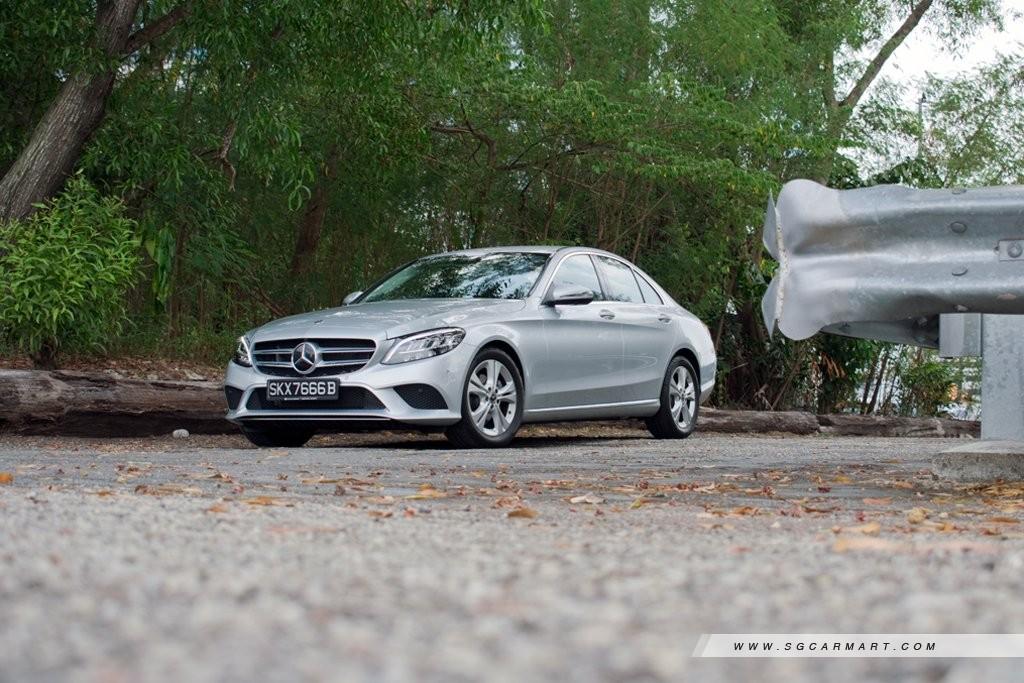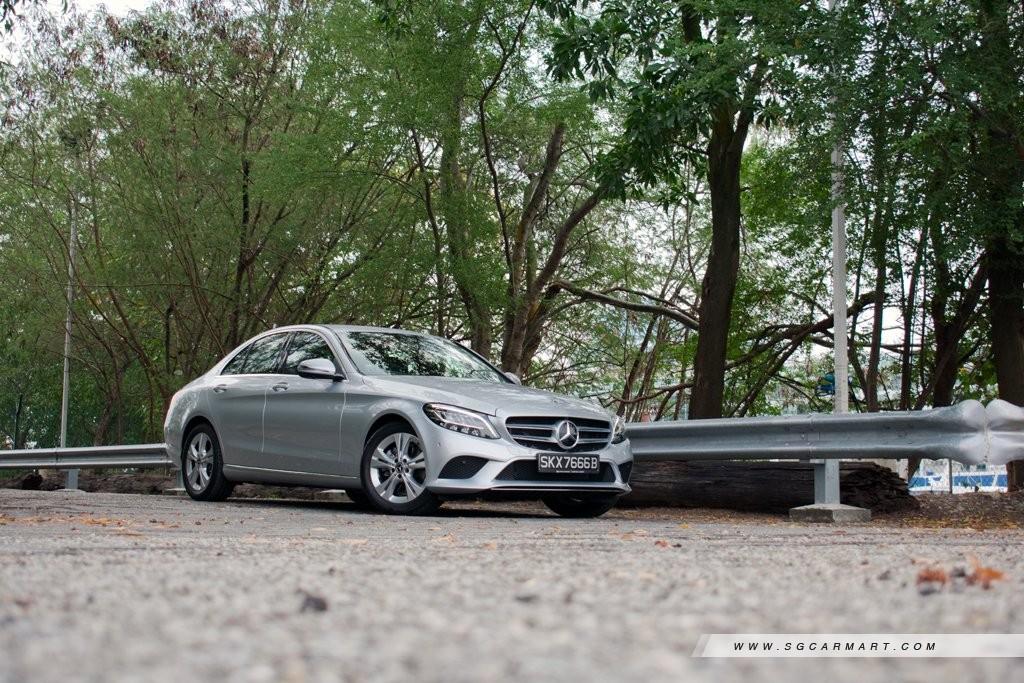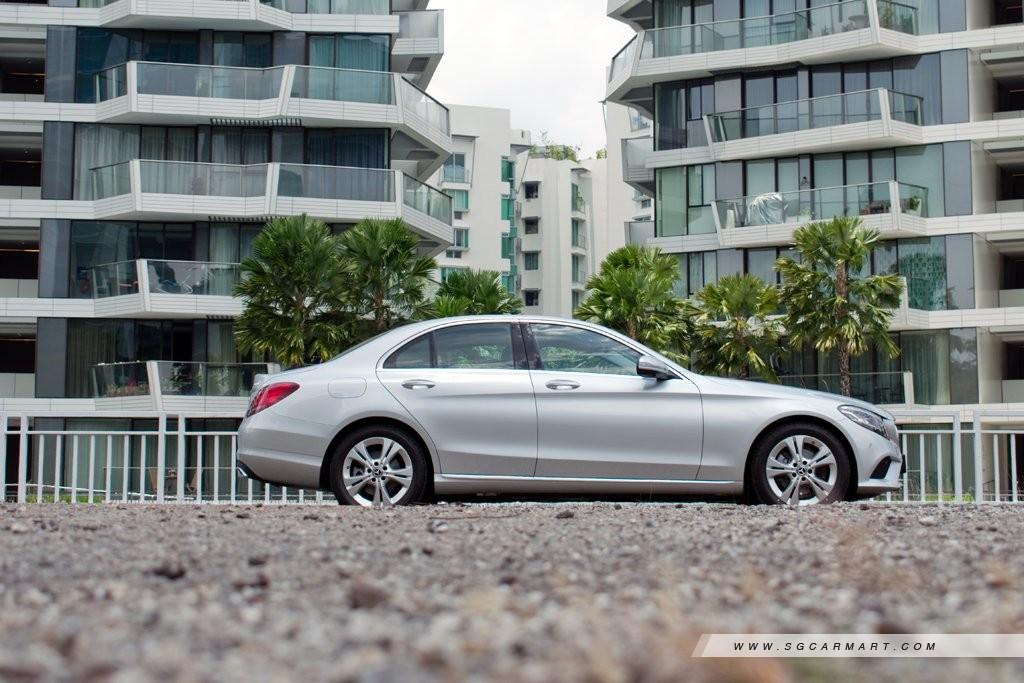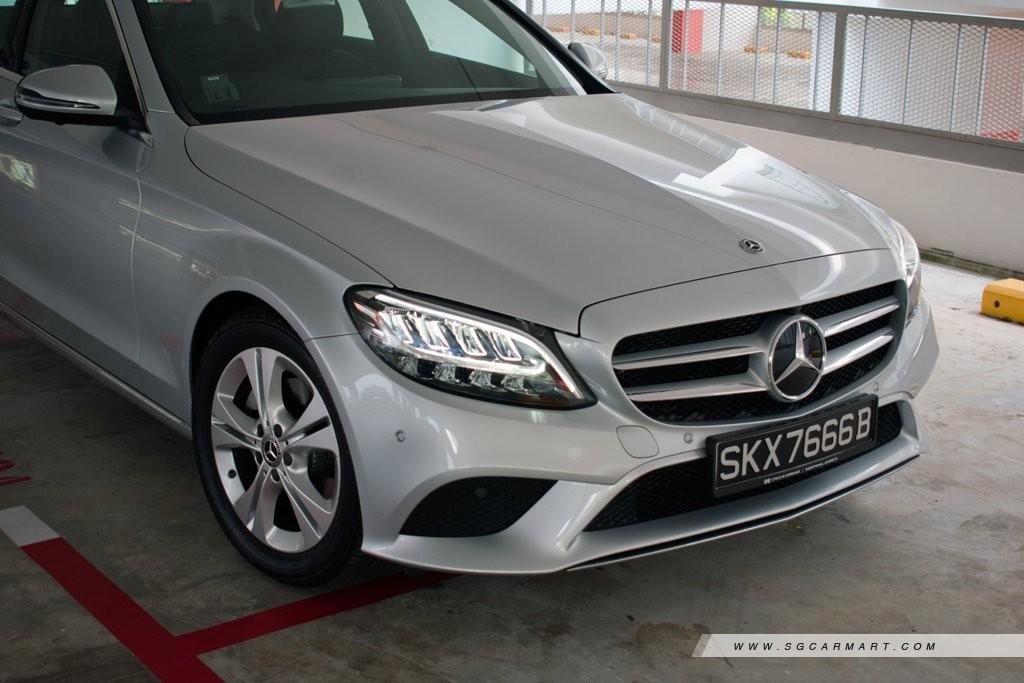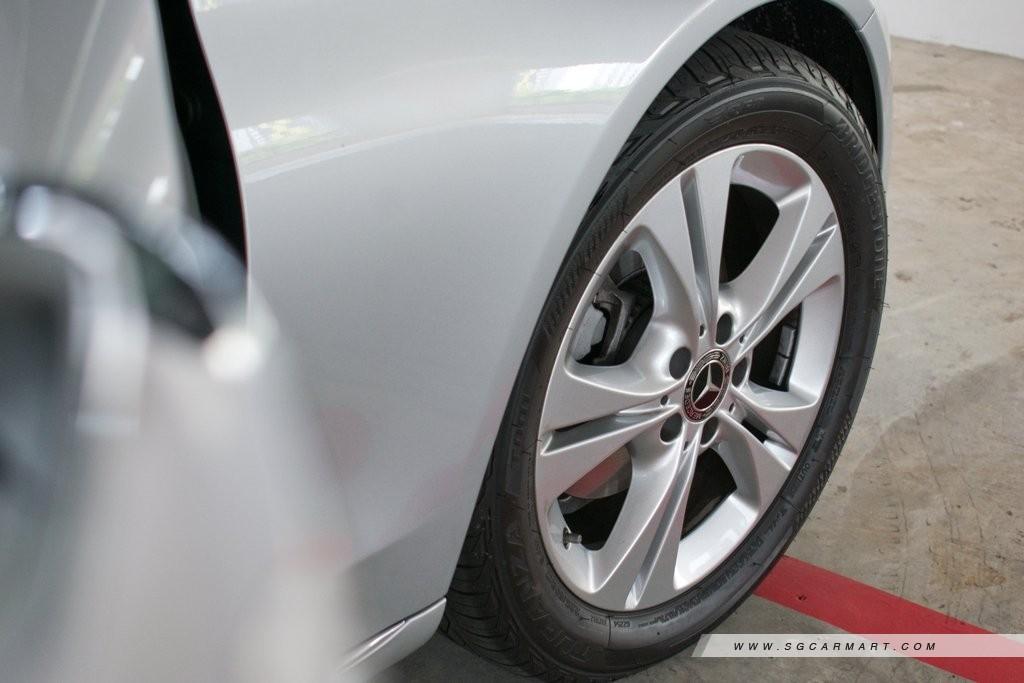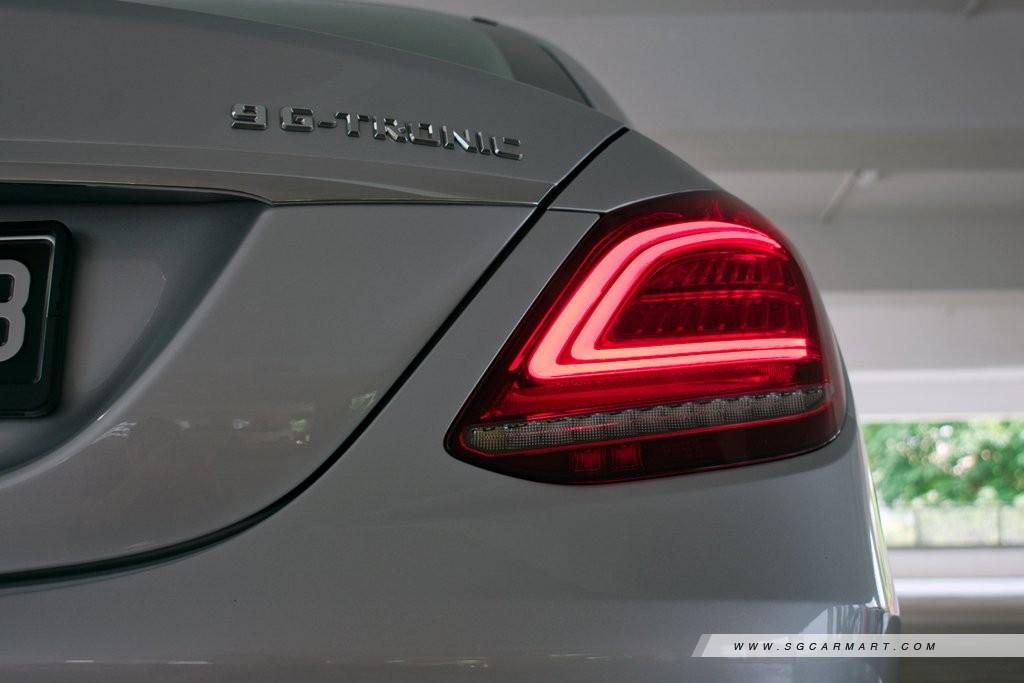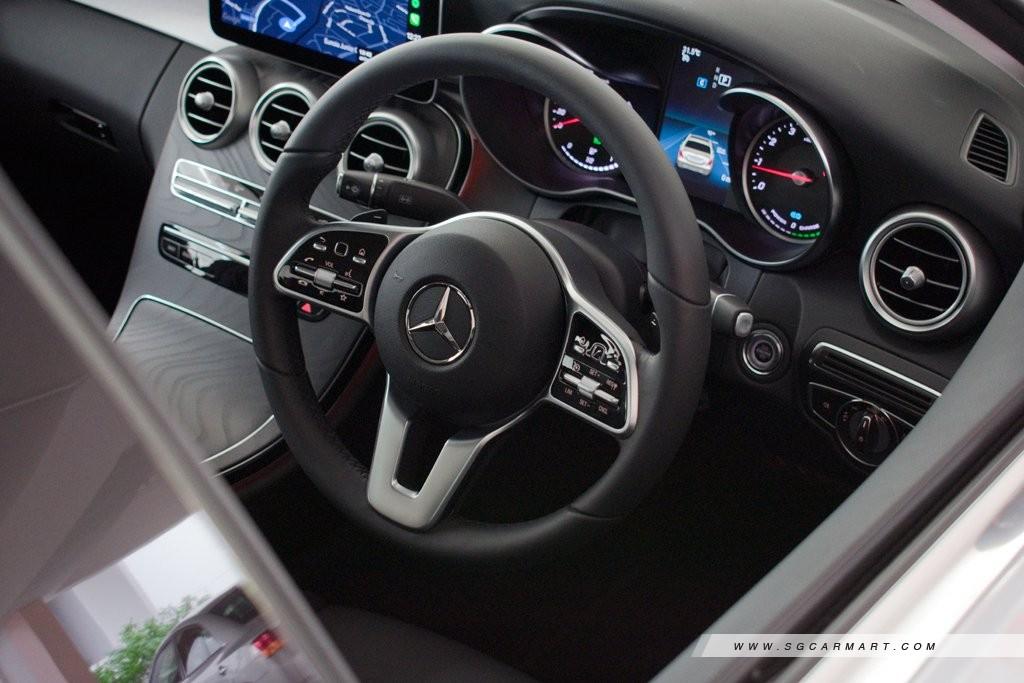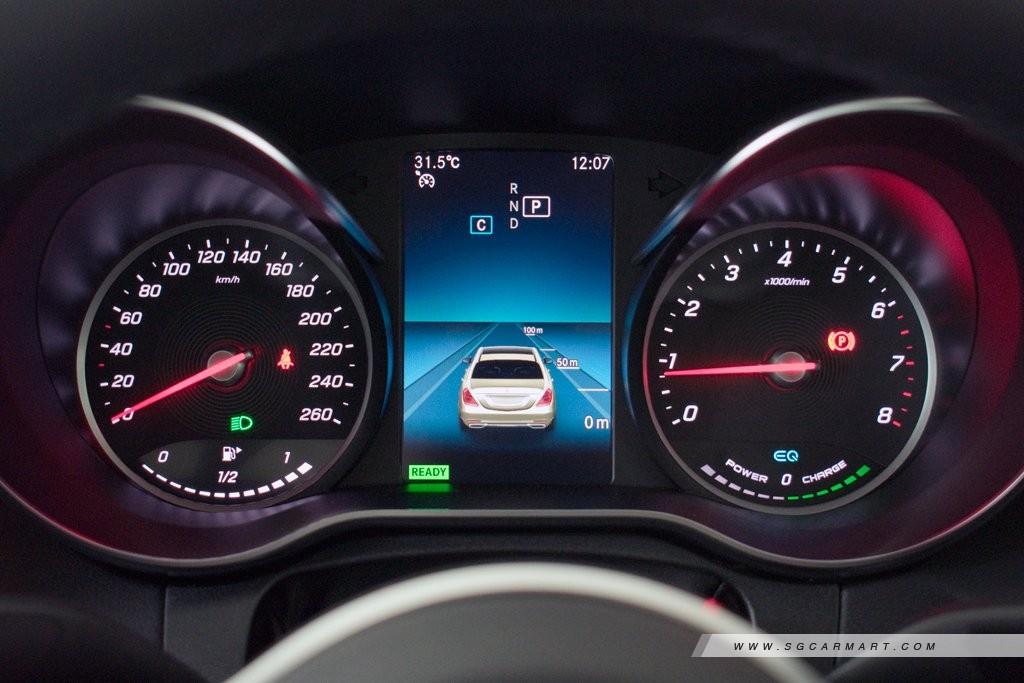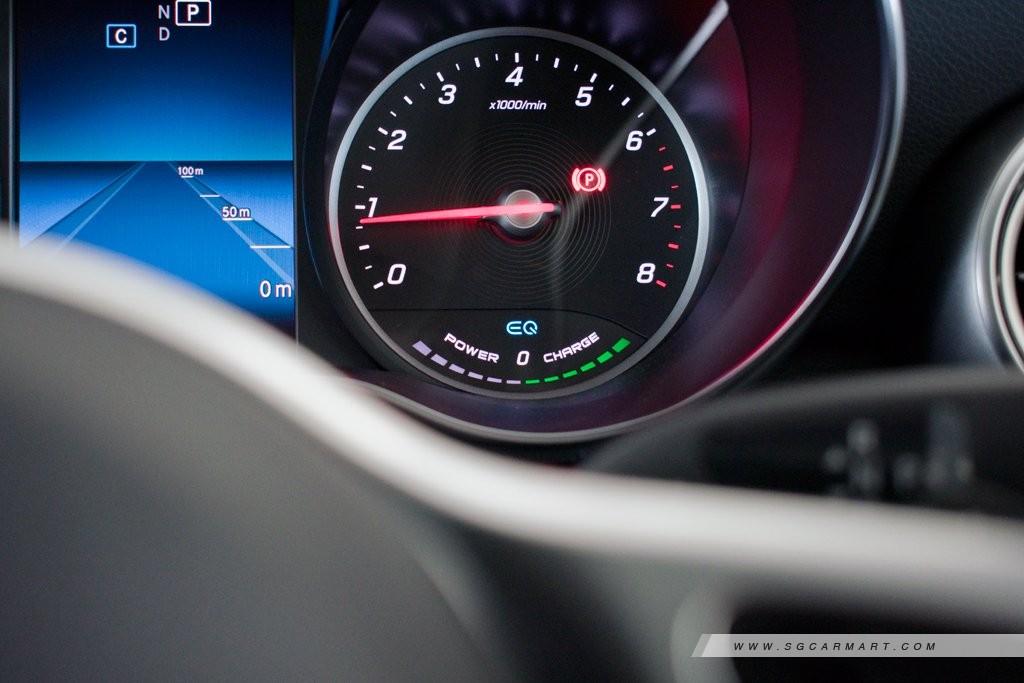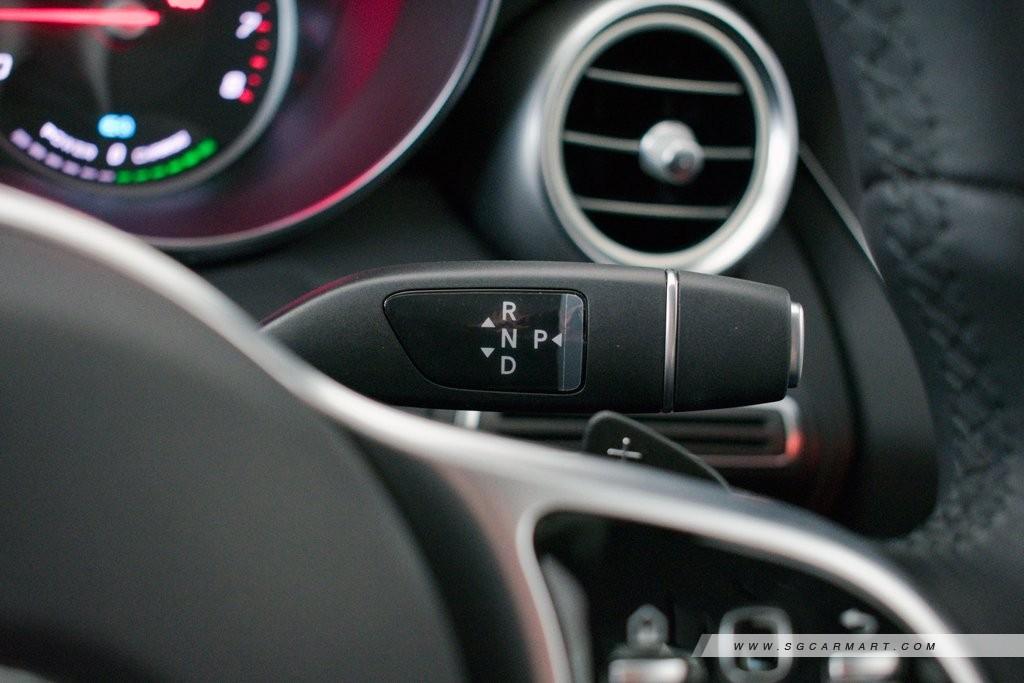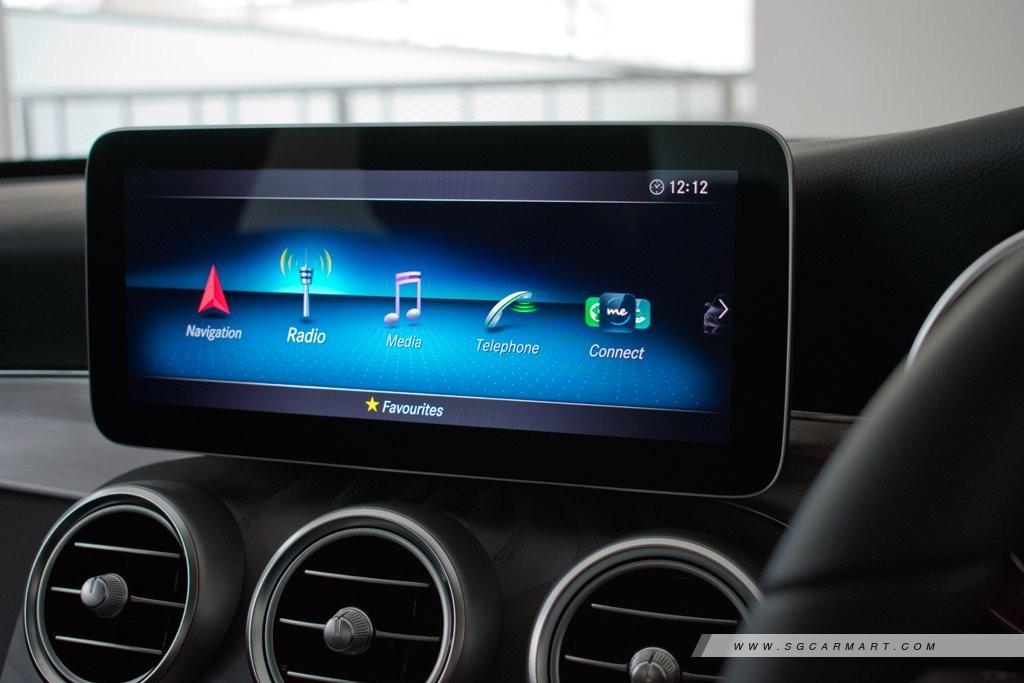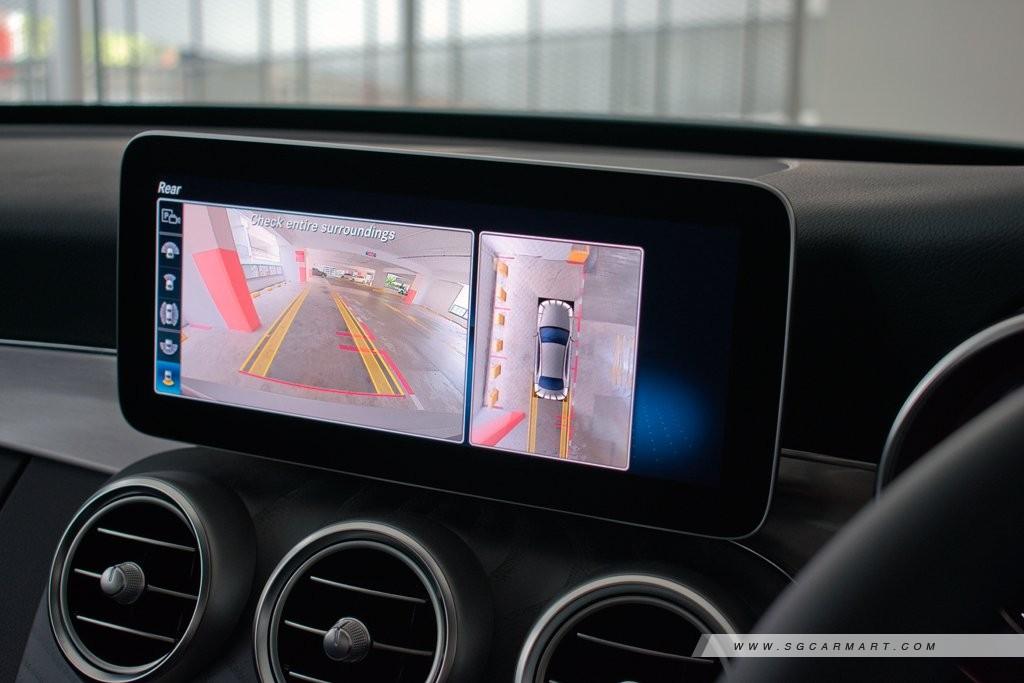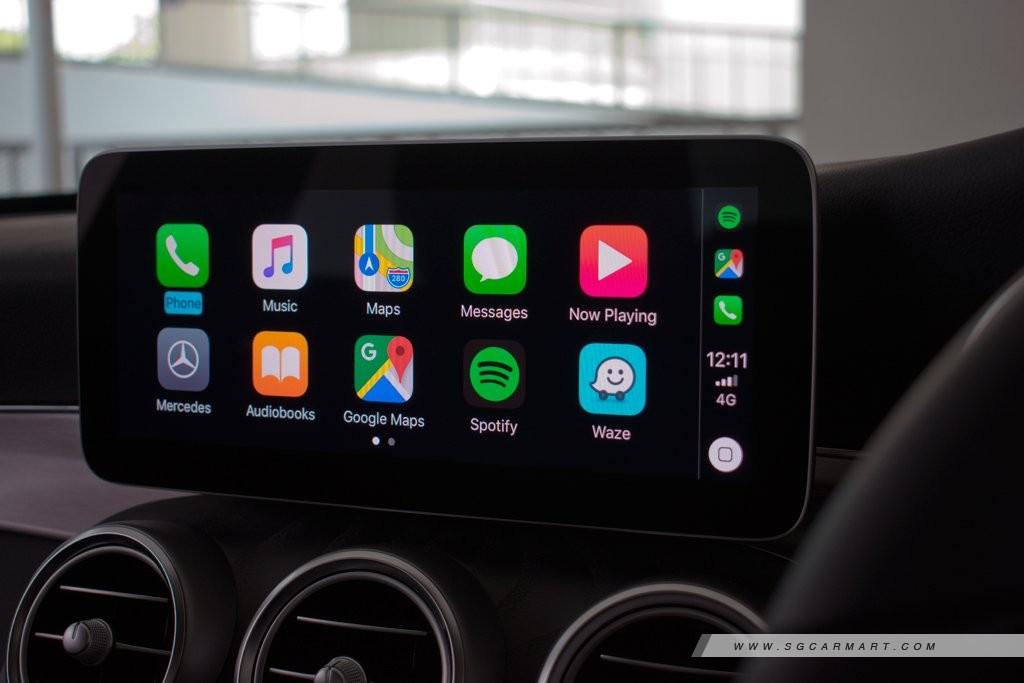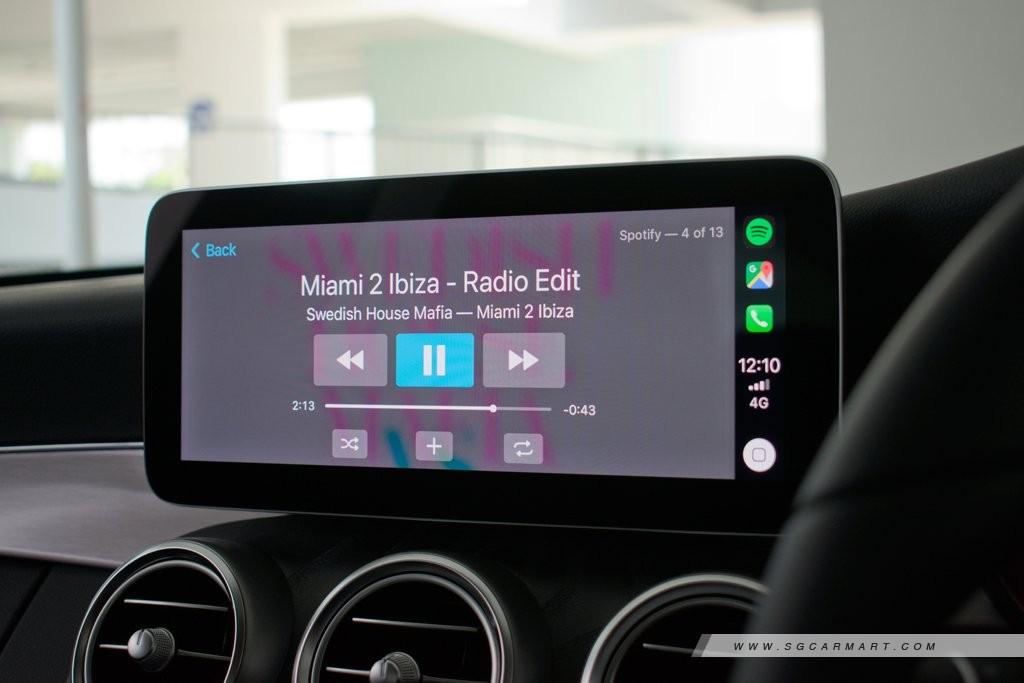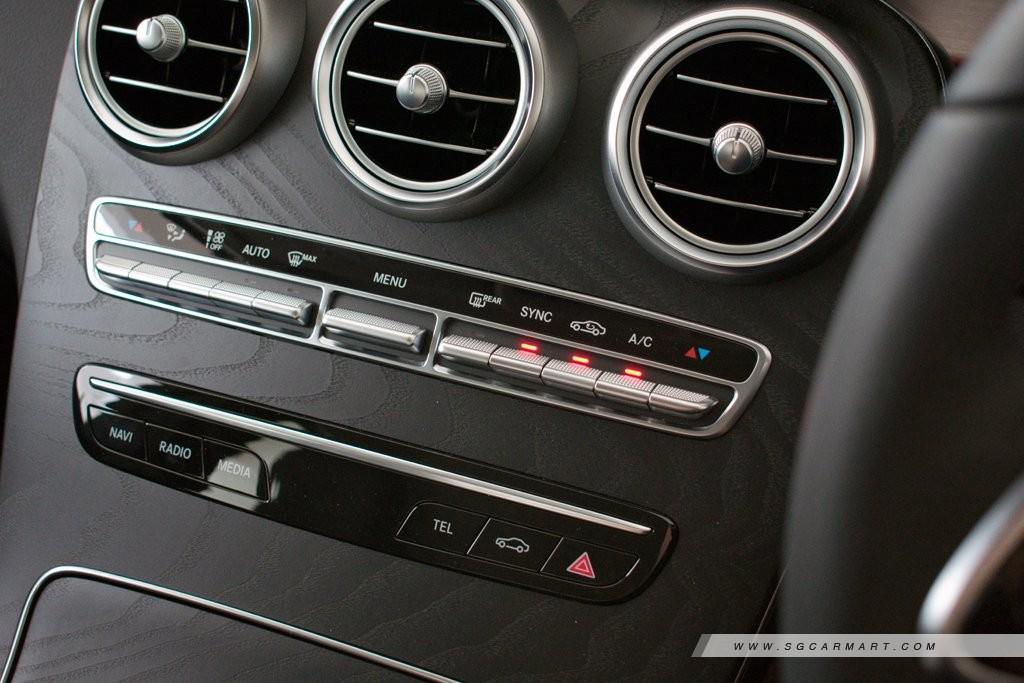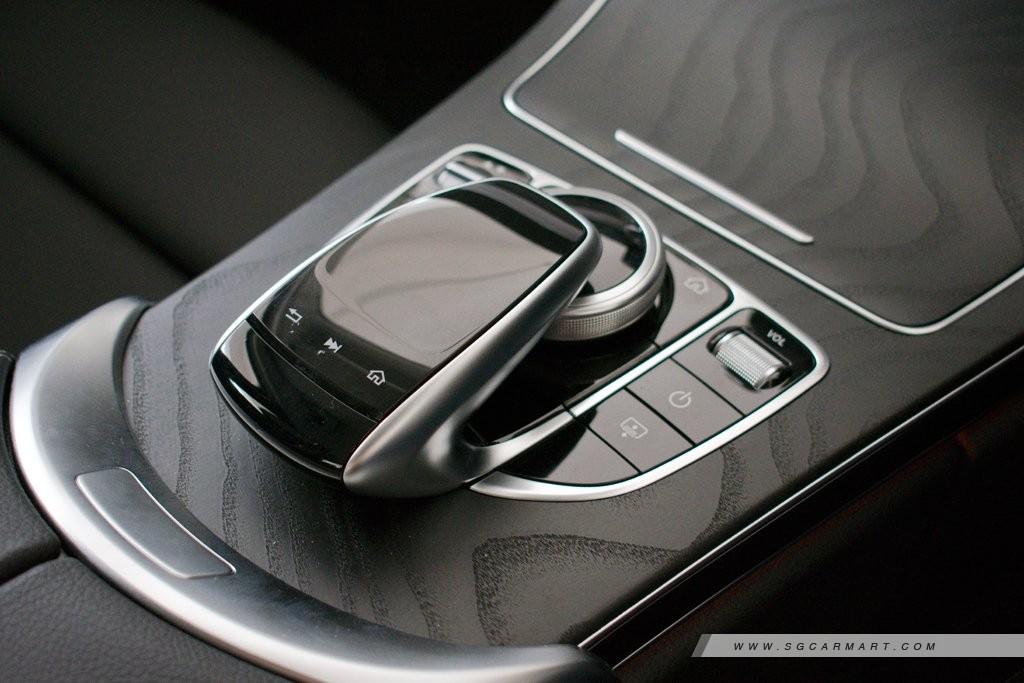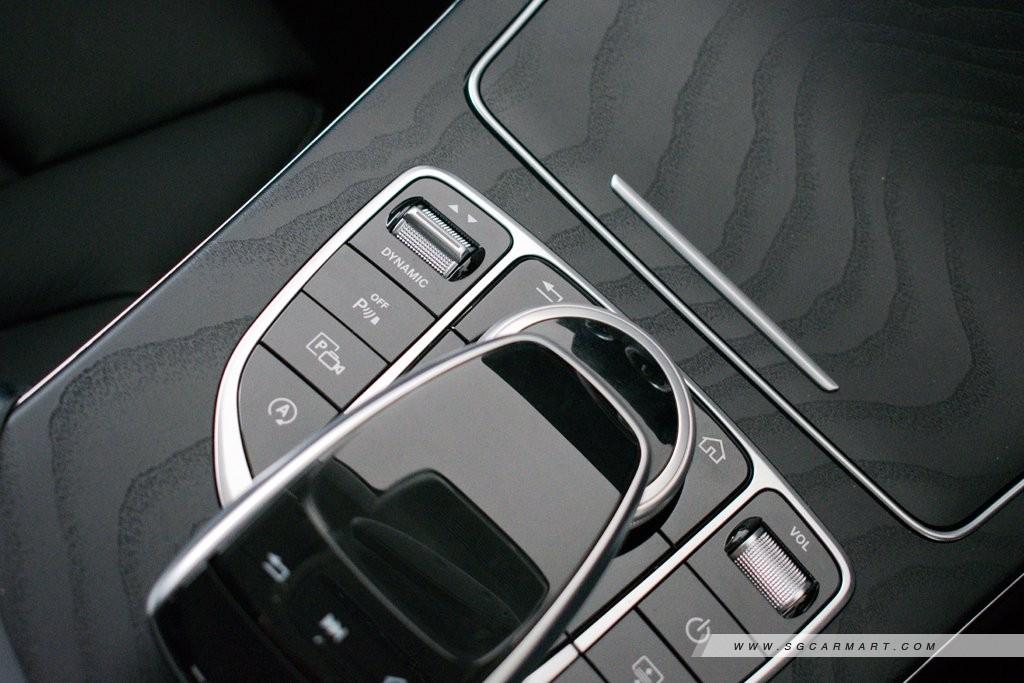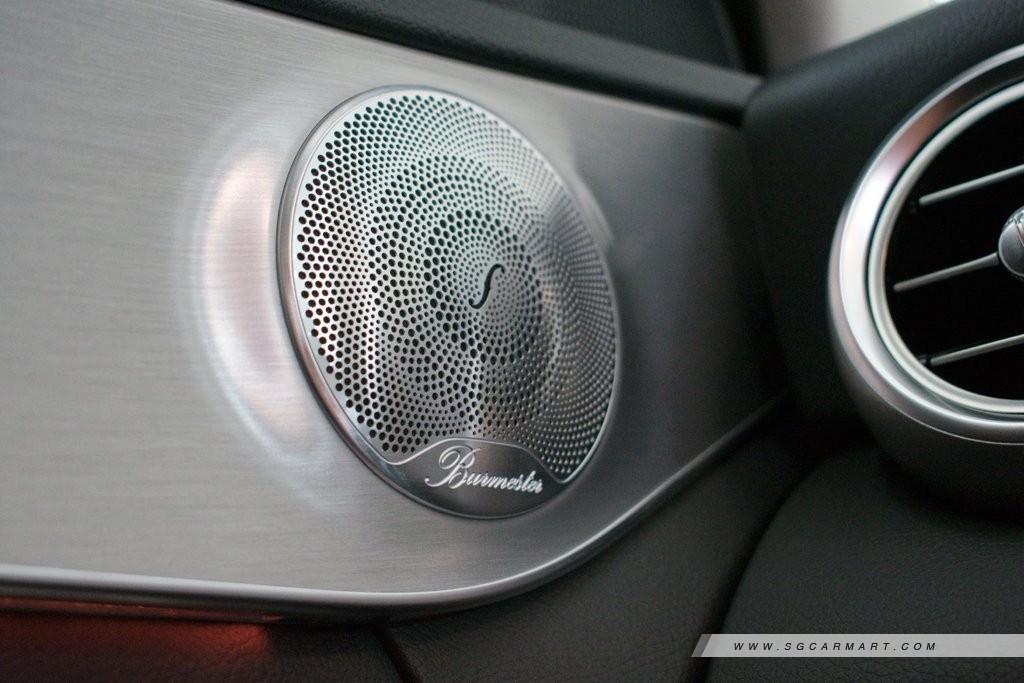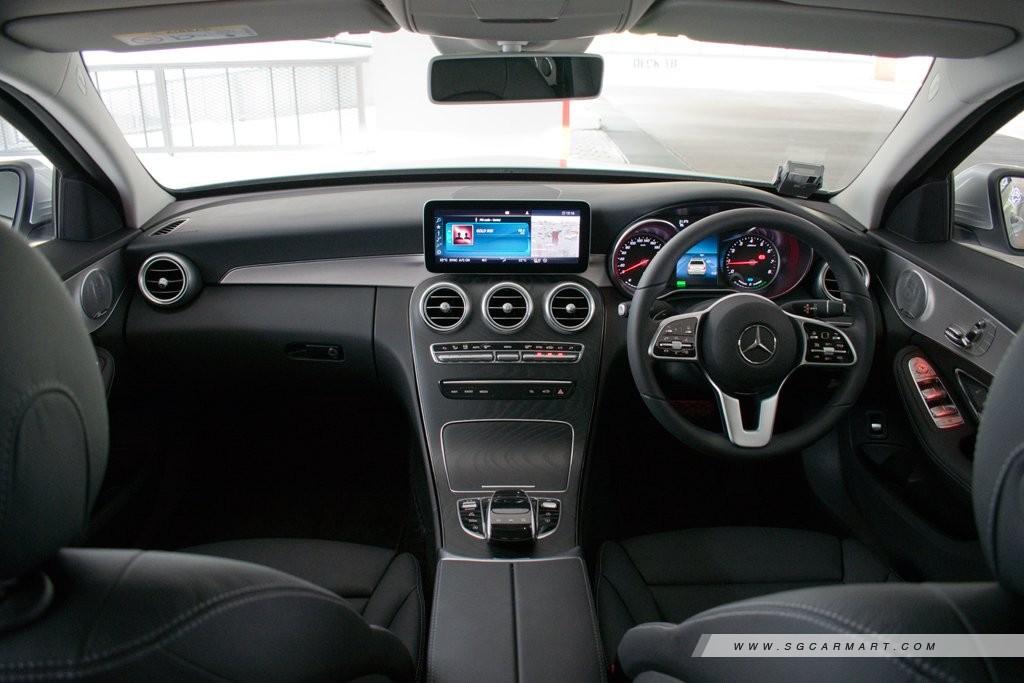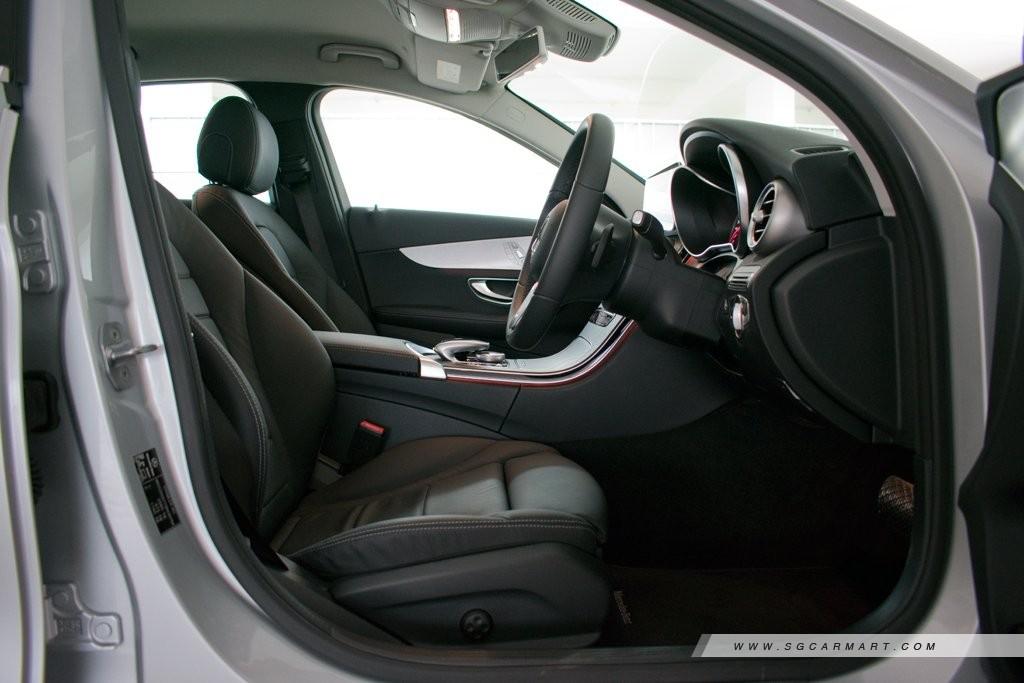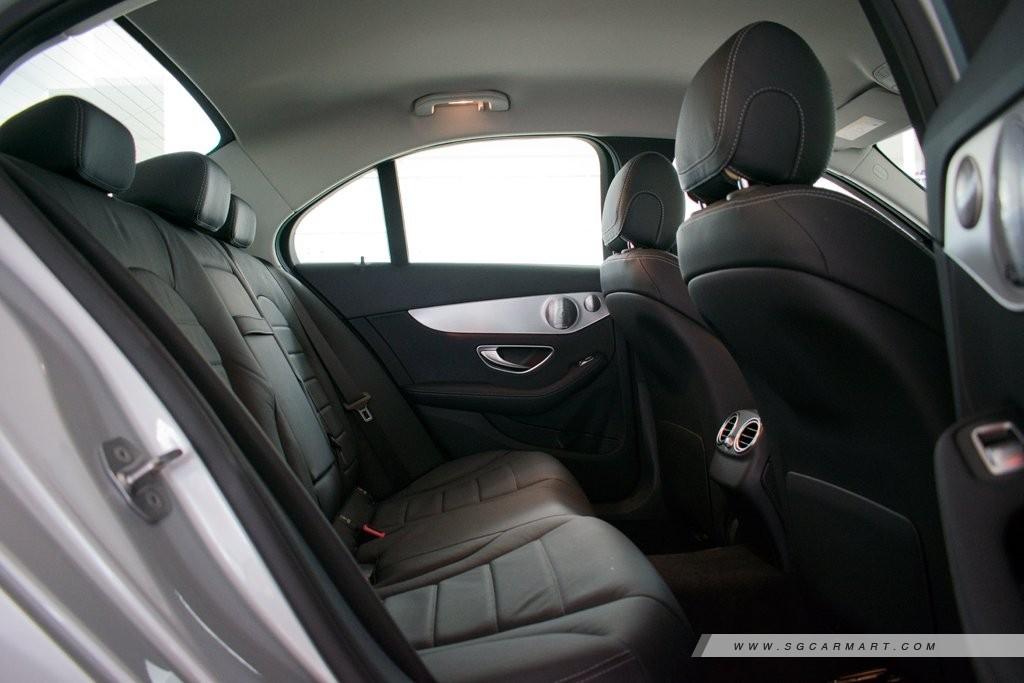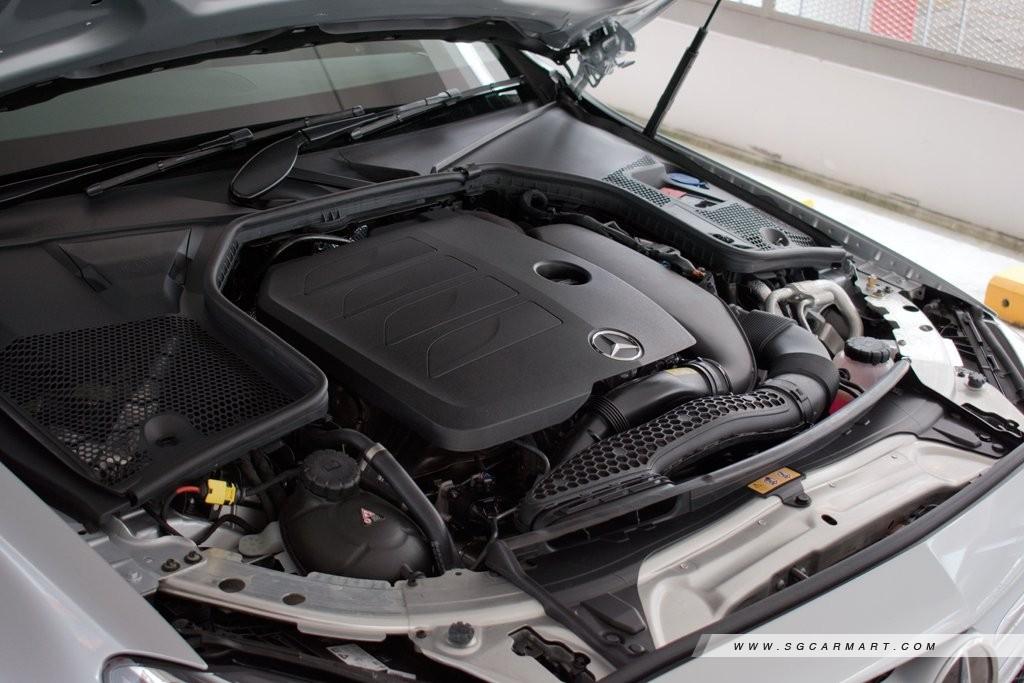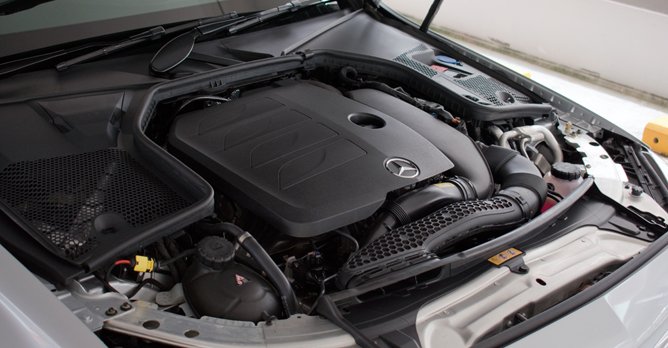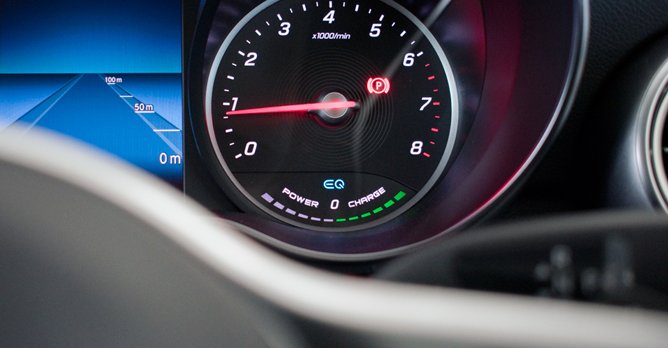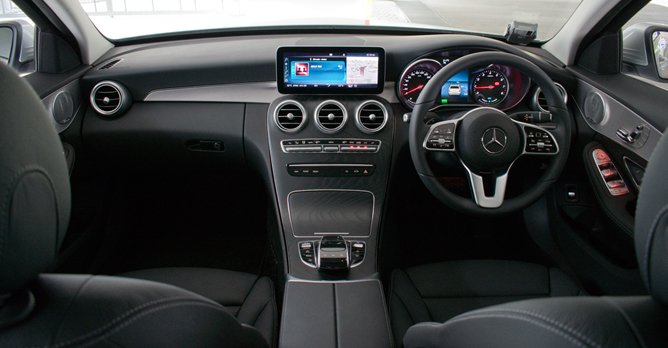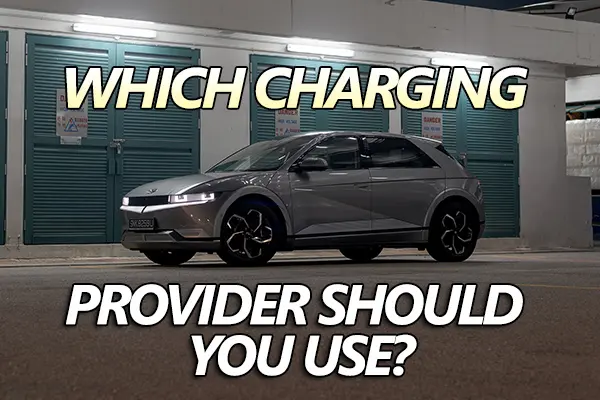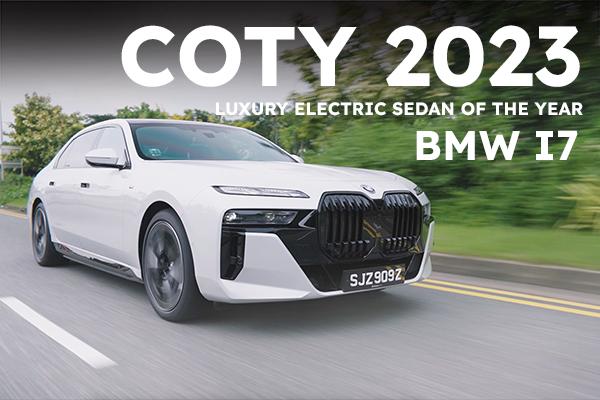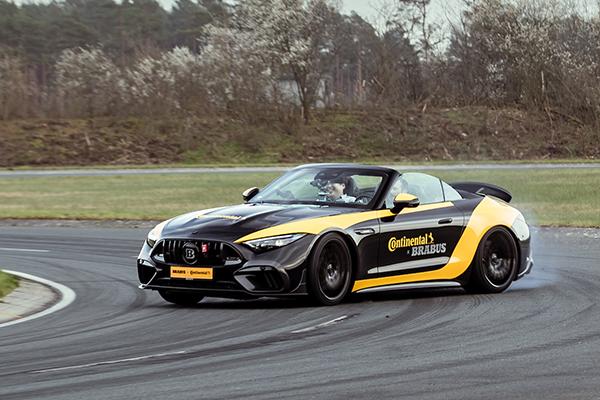Mercedes-Benz C-Class Saloon C200 Avantgarde (A) Facelift Review
07 Mar 2019|32,088 views
Facelift (What's New)
Turbocharged 1.5-litre engine with EQ Boost mild hybrid system
Nine-speed automatic transmission
Redesigned bumpers, head and tail lamps
Fully-digital infotainment and cluster screens
The fourth generation C-Class may have been the best-selling Benz in the last four years (yes, it outsold even its stilted stablemates) but the German manufacturer isn't resting on its laurels and has given the model a mid-life update to remain relevant, especially with the incoming threat of an all new BMW 3 Series.
And while the cabin offers the biggest visual changes, the most notable improvement to the C-Class lies under the hood of the variant you see here, the C200, which is now powered by a 1.5-litre engine.
What! It's gone from 2.0 to 1.5?
Yes, but don't panic just yet. Aided by a cutting-edge EQ Boost mild hybrid system that uses a 48V system with a belt-driven starter-generator, performance isn't much affected.
Admittedly, the outgoing C200's 2.0-litre has more torque, rated at 300Nm (now -20Nm) and a quicker 0-100km/h timing of 7.3 seconds (now +0.4 seconds) but the new, hybridised 1.5-litre makes the same amount of power as before, rated at 181bhp, and has a higher top speed of 239km/h (now +4km/h).
For day-to-day driving, you won't really notice the reduction in engine capacity.
In fact, it doesn't feel like it's powered by a little 1.5-litre at all because the aforementioned EQ Boost system, which contributes 14bhp of the total output, supports the bottom-end of the rev range before the turbocharger does its magic. This means that the C200 is still considerably spritely off the line.
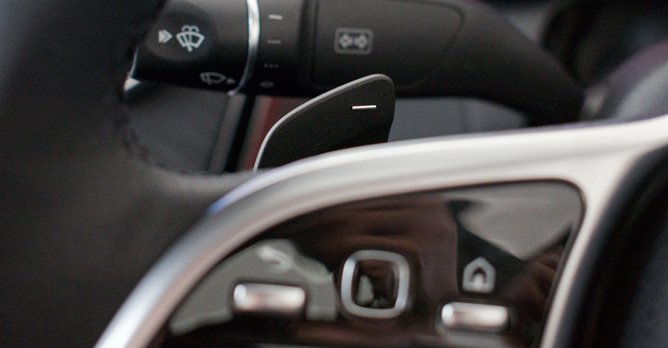
 Paddle shifters are a welcoming feature when you are in the mood to drive the C-Class a little fast, and a little furiously
Paddle shifters are a welcoming feature when you are in the mood to drive the C-Class a little fast, and a little furiously
More importantly, EQ Boost works so seamlessly you won't even remember it's there, all while enjoying 12km/L of fuel efficiency, which is impressively close to the stated 16km/L.
And while the cabin offers the biggest visual changes, the most notable improvement to the C-Class lies under the hood of the variant you see here, the C200, which is now powered by a 1.5-litre engine.
What! It's gone from 2.0 to 1.5?
Yes, but don't panic just yet. Aided by a cutting-edge EQ Boost mild hybrid system that uses a 48V system with a belt-driven starter-generator, performance isn't much affected.
Admittedly, the outgoing C200's 2.0-litre has more torque, rated at 300Nm (now -20Nm) and a quicker 0-100km/h timing of 7.3 seconds (now +0.4 seconds) but the new, hybridised 1.5-litre makes the same amount of power as before, rated at 181bhp, and has a higher top speed of 239km/h (now +4km/h).
For day-to-day driving, you won't really notice the reduction in engine capacity.
In fact, it doesn't feel like it's powered by a little 1.5-litre at all because the aforementioned EQ Boost system, which contributes 14bhp of the total output, supports the bottom-end of the rev range before the turbocharger does its magic. This means that the C200 is still considerably spritely off the line.

More importantly, EQ Boost works so seamlessly you won't even remember it's there, all while enjoying 12km/L of fuel efficiency, which is impressively close to the stated 16km/L.
The only niggles we have with the car are the slight sluggishness of the nine-speed transmission when left to its devices (it's fine when driven manually using the paddle shifters) and that its small-capacity engine can get a little vocal when driven hard, accompanied by a slight whirring noise when deccelerating.
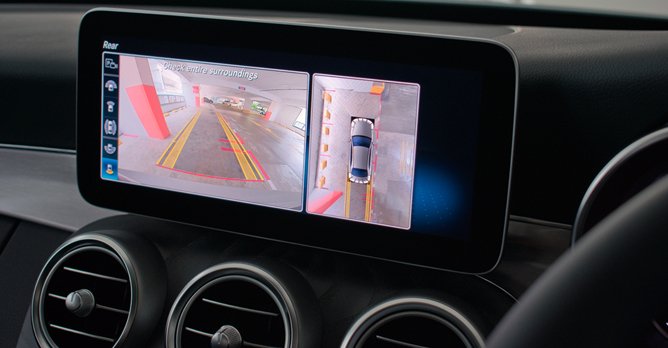
 Apple CarPlay connectivity is the perfect companion for your favourite beats on a long, comfortable drive
Apple CarPlay connectivity is the perfect companion for your favourite beats on a long, comfortable drive
Should it be driven hard, though?
Thankfully, those aren't things that will bother most C-Class buyers who will typically be more concerned about comfort and easy driving, which is what the C-Class does superbly.
It rides well over pockmarked tarmac, in a fashion that's entirely befitting of the Benz badge, yet doesn't waft around like a seasick walrus when you're in the mood for some backroad twisties.
The car feels tightly put-together, and coupled with a well-weighted steering that's positive across the ratio, affords a level of dynamism that should give its BMW rival a run for its money.
As for the rest of the car, there really isn't anything to nit-pick at, even if the infotainment system a little slow to respond at times. With its carefully selected materials and top notch fit and finish, the cabin is certainly modernised (customers get dual digital screens; our test car's cluster was only semi-digital).
Alas, the car comes at a cost. At $201,888 (as of 4 March 2019), the C-Class is a tad high compared to, say, a 2.0-litre A4, which costs nearly $30,000 less.
Then again, given Merc's track (read: sales) record, we don't reckon this will dampen the appeal of the C-Class.

Should it be driven hard, though?
Thankfully, those aren't things that will bother most C-Class buyers who will typically be more concerned about comfort and easy driving, which is what the C-Class does superbly.
It rides well over pockmarked tarmac, in a fashion that's entirely befitting of the Benz badge, yet doesn't waft around like a seasick walrus when you're in the mood for some backroad twisties.
The car feels tightly put-together, and coupled with a well-weighted steering that's positive across the ratio, affords a level of dynamism that should give its BMW rival a run for its money.
As for the rest of the car, there really isn't anything to nit-pick at, even if the infotainment system a little slow to respond at times. With its carefully selected materials and top notch fit and finish, the cabin is certainly modernised (customers get dual digital screens; our test car's cluster was only semi-digital).
Alas, the car comes at a cost. At $201,888 (as of 4 March 2019), the C-Class is a tad high compared to, say, a 2.0-litre A4, which costs nearly $30,000 less.
Then again, given Merc's track (read: sales) record, we don't reckon this will dampen the appeal of the C-Class.
Facelift (What's New)
Turbocharged 1.5-litre engine with EQ Boost mild hybrid system
Nine-speed automatic transmission
Redesigned bumpers, head and tail lamps
Fully-digital infotainment and cluster screens
The fourth generation C-Class may have been the best-selling Benz in the last four years (yes, it outsold even its stilted stablemates) but the German manufacturer isn't resting on its laurels and has given the model a mid-life update to remain relevant, especially with the incoming threat of an all new BMW 3 Series.
And while the cabin offers the biggest visual changes, the most notable improvement to the C-Class lies under the hood of the variant you see here, the C200, which is now powered by a 1.5-litre engine.
What! It's gone from 2.0 to 1.5?
Yes, but don't panic just yet. Aided by a cutting-edge EQ Boost mild hybrid system that uses a 48V system with a belt-driven starter-generator, performance isn't much affected.
Admittedly, the outgoing C200's 2.0-litre has more torque, rated at 300Nm (now -20Nm) and a quicker 0-100km/h timing of 7.3 seconds (now +0.4 seconds) but the new, hybridised 1.5-litre makes the same amount of power as before, rated at 181bhp, and has a higher top speed of 239km/h (now +4km/h).
For day-to-day driving, you won't really notice the reduction in engine capacity.
In fact, it doesn't feel like it's powered by a little 1.5-litre at all because the aforementioned EQ Boost system, which contributes 14bhp of the total output, supports the bottom-end of the rev range before the turbocharger does its magic. This means that the C200 is still considerably spritely off the line.
More importantly, EQ Boost works so seamlessly you won't even remember it's there, all while enjoying 12km/L of fuel efficiency, which is impressively close to the stated 16km/L.
And while the cabin offers the biggest visual changes, the most notable improvement to the C-Class lies under the hood of the variant you see here, the C200, which is now powered by a 1.5-litre engine.
What! It's gone from 2.0 to 1.5?
Yes, but don't panic just yet. Aided by a cutting-edge EQ Boost mild hybrid system that uses a 48V system with a belt-driven starter-generator, performance isn't much affected.
Admittedly, the outgoing C200's 2.0-litre has more torque, rated at 300Nm (now -20Nm) and a quicker 0-100km/h timing of 7.3 seconds (now +0.4 seconds) but the new, hybridised 1.5-litre makes the same amount of power as before, rated at 181bhp, and has a higher top speed of 239km/h (now +4km/h).
For day-to-day driving, you won't really notice the reduction in engine capacity.
In fact, it doesn't feel like it's powered by a little 1.5-litre at all because the aforementioned EQ Boost system, which contributes 14bhp of the total output, supports the bottom-end of the rev range before the turbocharger does its magic. This means that the C200 is still considerably spritely off the line.
More importantly, EQ Boost works so seamlessly you won't even remember it's there, all while enjoying 12km/L of fuel efficiency, which is impressively close to the stated 16km/L.
The only niggles we have with the car are the slight sluggishness of the nine-speed transmission when left to its devices (it's fine when driven manually using the paddle shifters) and that its small-capacity engine can get a little vocal when driven hard, accompanied by a slight whirring noise when deccelerating. 
 Apple CarPlay connectivity is the perfect companion for your favourite beats on a long, comfortable drive
Apple CarPlay connectivity is the perfect companion for your favourite beats on a long, comfortable drive
Should it be driven hard, though?
Thankfully, those aren't things that will bother most C-Class buyers who will typically be more concerned about comfort and easy driving, which is what the C-Class does superbly.
It rides well over pockmarked tarmac, in a fashion that's entirely befitting of the Benz badge, yet doesn't waft around like a seasick walrus when you're in the mood for some backroad twisties.
The car feels tightly put-together, and coupled with a well-weighted steering that's positive across the ratio, affords a level of dynamism that should give its BMW rival a run for its money.
As for the rest of the car, there really isn't anything to nit-pick at, even if the infotainment system a little slow to respond at times. With its carefully selected materials and top notch fit and finish, the cabin is certainly modernised (customers get dual digital screens; our test car's cluster was only semi-digital).
Alas, the car comes at a cost. At $201,888 (as of 4 March 2019), the C-Class is a tad high compared to, say, a 2.0-litre A4, which costs nearly $30,000 less.
Then again, given Merc's track (read: sales) record, we don't reckon this will dampen the appeal of the C-Class.

Should it be driven hard, though?
Thankfully, those aren't things that will bother most C-Class buyers who will typically be more concerned about comfort and easy driving, which is what the C-Class does superbly.
It rides well over pockmarked tarmac, in a fashion that's entirely befitting of the Benz badge, yet doesn't waft around like a seasick walrus when you're in the mood for some backroad twisties.
The car feels tightly put-together, and coupled with a well-weighted steering that's positive across the ratio, affords a level of dynamism that should give its BMW rival a run for its money.
As for the rest of the car, there really isn't anything to nit-pick at, even if the infotainment system a little slow to respond at times. With its carefully selected materials and top notch fit and finish, the cabin is certainly modernised (customers get dual digital screens; our test car's cluster was only semi-digital).
Alas, the car comes at a cost. At $201,888 (as of 4 March 2019), the C-Class is a tad high compared to, say, a 2.0-litre A4, which costs nearly $30,000 less.
Then again, given Merc's track (read: sales) record, we don't reckon this will dampen the appeal of the C-Class.
Also read our comparison article on:
Audi A4 vs Mercedes-Benz C-Class vs Volvo S60Car Information
Mercedes-Benz C-Class Saloon Mild Hybrid C200 Avantgarde (A)
CAT B|Petrol-Electric|15.8km/L
Horsepower
135kW (181 bhp)
Torque
280 Nm
Acceleration
7.7sec (0-100km /hr)
This model is no longer being sold by local distributor
All Used Mercedes-Benz C-Class Saloon Mild HybridThank You For Your Subscription.
